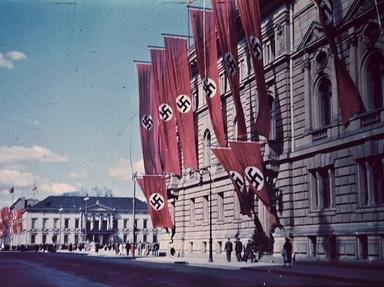Quiz Answer Key and Fun Facts
1. Shortly after becoming chancellor Hitler chaired his first cabinet meeting. What did he give as his top priority?
2. After Hitler had became Chancellor these chilling words were written: "This damnable man will plunge our Reich into the abyss and will bring inconceivable misery down upon our nation". Who wrote it?
3. In 1933 a Dutchman, by the name of Marinus van der Lubbe, was blamed for an event that led to draconic emergency measures and restrictions on civil liberties. What had he done?
4. What did Hitler use to make himself the legal dictator of Germany in 1933?
5. There were two major trade union organisations within Germany in 1933. What did Hitler replace the trade unions with?
6. The SA (Sturmabteilung) were also known as the Brown Shirts. They had played a major role in getting Hitler into power. They provided protection for Hitler, dealt with hecklers at Nazi Party events and dished out fear and intimidation to opponents of the Nazi's.
Who was the leader and co-founder of the Brown Shirts?
7. After eliminating his political opponents, Hitler was set up in a position of near absolute power. Between the end of 1933 and the middle of 1934 who, or what, did Hitler consider the greatest risk to his power?
8. On 30 June 1934 Hitler led a blood purge that would end the lives of many people and eliminate his final threat. That night is commonly known as the "Night of the Long __________".
9. What happened to Hitler's friend and ally, Ernst Röhm, as a result of the blood purge that took place on 30 June 1934?
10. Hitler won the elections on 2 August 1934 and as a result became the supreme ruler of Germany by beating President Hindenburg in a landslide victory.
Source: Author
Lssah
This quiz was reviewed by FunTrivia editor
bloomsby before going online.
Any errors found in FunTrivia content are routinely corrected through our feedback system.


